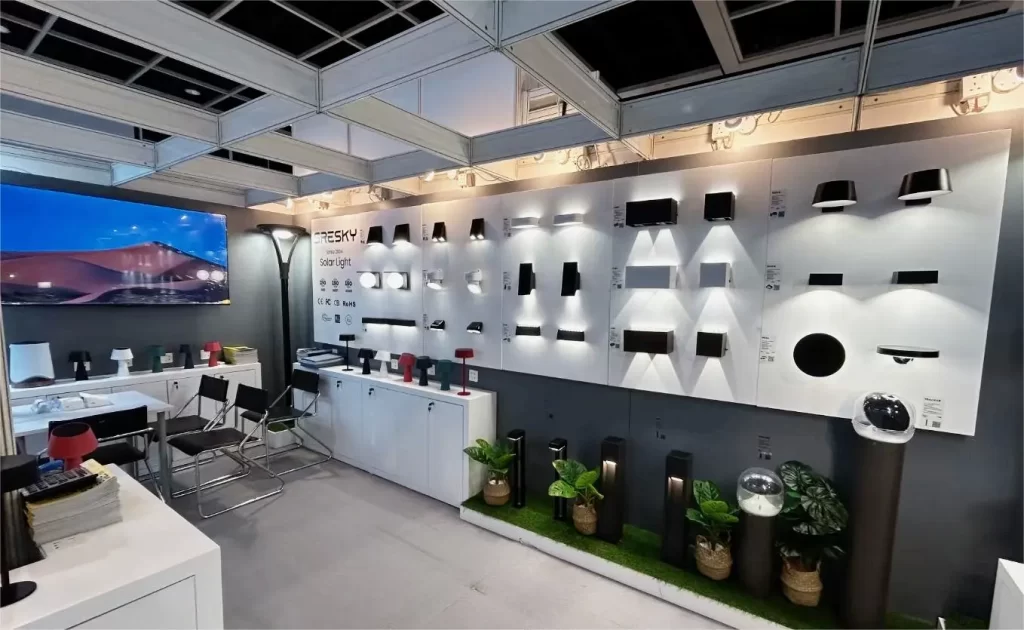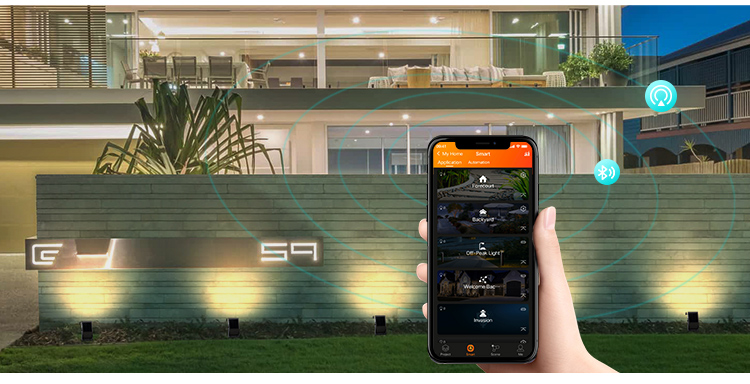Africa, a vast continent brimming with vitality and potential, is on the brink of a new dawn in the energy revolution. With rapid economic growth and accelerating urbanization, safe, reliable, and sustainable lighting solutions have become a critical part of the infrastructure driving its development. From bustling urban centers to tranquil rural communities, the demand for high-quality solar lighting is growing at an unprecedented pace. Research shows that the African solar lighting market is expanding rapidly, a trend further boosted by robust renewable energy policies.
According to the World Bank, hundreds of millions of people in Sub-Saharan Africa still lack reliable access to electricity. In response, governments are significantly increasing budget allocations for community lighting and solar streetlight projects to close this energy gap and create safer, more vibrant environments through clean energy.
As a global leader in solar lighting solutions, Sottlot—part of the SRESKY brand—leverages over 20 years of industry experience to actively meet the unique needs of the African market through its carefully developed Sottlot Africa Strategy.
Understanding the Pulse of the African Market: Challenges and Opportunities Coexist
The demand for solar lighting in Africa extends far beyond simple product delivery—it requires comprehensive, localized solutions. Through in-depth research and practical experience, Sottlot has identified three key market insights:
1. Surging Demand for Public Lighting
From Kampala, the capital of Uganda, to N’Djamena in Chad, governments and international organizations like the African Development Bank are making substantial investments in solar streetlight projects. These initiatives aim to improve nighttime road safety, extend business hours, and reduce operational costs for municipalities.
High-performance, durable solar lights such as Sottlot’s ALPHA series (up to 9,000 lumens) and URANUS series (up to 6,000 lumens) have been widely deployed in urban centers and commercial districts, making them the ideal choice to meet growing demand.
2. The Rigorous Test of Durability
Africa’s diverse climates—from the scorching Sahara Desert to the humid tropical rainforests—place extremely high demands on the durability of outdoor lighting. Many low-quality products on the market fail under these conditions. Sottlot understands that durability is not just a technical requirement—it is fundamental to building long-term customer trust.
3. Meeting the Energy Needs of Remote Areas
In remote rural regions where the power grid is difficult to extend, stand-alone, easy-to-install solar lighting systems provide the fastest path to improving living standards. The need for community lighting in these areas is urgent, as light is essential for education, healthcare, and economic development.
Sottlot’s Africa Strategy: Tailored Solutions and Win-Win Collaboration
Facing both opportunities and challenges, Sottlot goes beyond product sales. The company is committed to being a trusted long-term partner. Here are the three pillars of the Sottlot Africa Strategy:
1. Delivering “Africa-Specific” Durable Solar Lights
Product quality is the foundation of market competitiveness. Sottlot’s lighting fixtures are engineered to withstand Africa’s harsh environmental conditions:
-
Durable materials: The ALPHA and URANUS series use high-quality die-cast aluminum and PC materials with IP65 waterproof and dustproof ratings, providing long-term resistance to sand, dust, and heavy rain.
-
Efficient heat dissipation: Optimized for high temperatures, these fixtures maintain performance and prolong lifespan by quickly dissipating heat from LED chips and internal components.
-
Extended lifespan: High-efficiency solar panels and intelligent battery management systems ensure years of stable operation with reduced maintenance.
2. Flexible Customization Services
With a robust R&D team, Sottlot offers tailored solutions for large-scale government projects and specialized client needs. Whether adjusting brightness levels, integrating intelligent control systems, or adapting to specific color temperature requirements, Sottlot ensures every lighting solution fits the project precisely. This customization is particularly advantageous in solar streetlight deployments.
3. Deepening Localized Collaboration
True market integration requires local partnerships. Sottlot actively builds strong relationships with distributors, engineers, and contractors across African nations. In addition to providing reliable lighting products, Sottlot shares technical expertise, project experience, and market insights—empowering local partners and driving mutual growth. This collaborative approach aligns with SRESKY’s core value: “Focusing entirely on our partners.”
Industry Insights: The Booming Growth of Africa’s Solar Lighting Market
Africa’s solar lighting sector is booming. Market research predicts the industry will be worth billions of dollars by 2030, with a compound annual growth rate (CAGR) exceeding 15%. This growth is fueled by several key factors:
-
Policy support: Many African governments have integrated solar lighting into national energy strategies. For instance, Kenya’s “Last Mile Connectivity Program” focuses on lighting remote communities.
-
International support: Organizations like the African Development Bank and World Bank provide financial and technical assistance to fast-track solar lighting projects.
-
Technological progress: Solar technology advancements have enhanced the efficiency and durability of lighting systems while reducing costs, paving the way for mass adoption.
Success Stories: Sottlot’s Footprint in Africa
Sottlot has achieved notable success across Africa. Here are two representative case studies:
1. Kampala City Solar Streetlight Project, Uganda
In partnership with the local government, Sottlot deployed hundreds of ALPHA series solar streetlights across major transportation routes and commercial zones. The result: a 20% drop in nighttime traffic accidents and a two-hour extension in commercial activity, significantly boosting safety and urban vitality.
2. Rural Community Lighting Program, Nigeria
In Nigeria’s remote rural areas, Sottlot installed URANUS series solar floodlights in schools, clinics, and public spaces. This not only improved daily life but also enabled evening education and medical services—earning widespread praise from local communities.
Conclusion: Partnering with Sottlot to Illuminate a New Era in Africa
Africa’s solar lighting market is a vast blue ocean of opportunity. Growth is driven not only by demand but also by a deep commitment to energy independence and sustainable development. With innovative products, a market-tailored strategy, and a cooperative approach, Sottlot is positioned as a transformative force in this energy revolution.
We warmly invite business partners, government agencies, and project stakeholders across Africa to connect with us. By choosing Sottlot, you gain a reliable partner backed by over 800 international certifications and a global network covering more than 70 countries.
Let’s join hands to light up every corner of the African continent with clean, efficient solar energy—and usher in a brighter, safer, and more prosperous future.
Africa, a vast continent brimming with vitality and potential, is on the brink of a new dawn in the energy revolution. With rapid economic growth and accelerating urbanization, safe, reliable, and sustainable lighting solutions have become a critical part of the infrastructure driving its development. From bustling urban centers to tranquil rural communities, the demand for high-quality solar lighting is growing at an unprecedented pace. Research shows that the African solar lighting market is expanding rapidly, a trend further boosted by robust renewable energy policies.
According to the World Bank, hundreds of millions of people in Sub-Saharan Africa still lack reliable access to electricity. In response, governments are significantly increasing budget allocations for community lighting and solar streetlight projects to close this energy gap and create safer, more vibrant environments through clean energy.
As a global leader in solar lighting solutions, Sottlot—part of the SRESKY brand—leverages over 20 years of industry experience to actively meet the unique needs of the African market through its carefully developed Sottlot Africa Strategy.
Understanding the Pulse of the African Market: Challenges and Opportunities Coexist
The demand for solar lighting in Africa extends far beyond simple product delivery—it requires comprehensive, localized solutions. Through in-depth research and practical experience, Sottlot has identified three key market insights:
1. Surging Demand for Public Lighting
From Kampala, the capital of Uganda, to N’Djamena in Chad, governments and international organizations like the African Development Bank are making substantial investments in solar streetlight projects. These initiatives aim to improve nighttime road safety, extend business hours, and reduce operational costs for municipalities.
High-performance, durable solar lights such as Sottlot’s ALPHA series (up to 9,000 lumens) and URANUS series (up to 6,000 lumens) have been widely deployed in urban centers and commercial districts, making them the ideal choice to meet growing demand.
2. The Rigorous Test of Durability
Africa’s diverse climates—from the scorching Sahara Desert to the humid tropical rainforests—place extremely high demands on the durability of outdoor lighting. Many low-quality products on the market fail under these conditions. Sottlot understands that durability is not just a technical requirement—it is fundamental to building long-term customer trust.
3. Meeting the Energy Needs of Remote Areas
In remote rural regions where the power grid is difficult to extend, stand-alone, easy-to-install solar lighting systems provide the fastest path to improving living standards. The need for community lighting in these areas is urgent, as light is essential for education, healthcare, and economic development.
Sottlot’s Africa Strategy: Tailored Solutions and Win-Win Collaboration
Facing both opportunities and challenges, Sottlot goes beyond product sales. The company is committed to being a trusted long-term partner. Here are the three pillars of the Sottlot Africa Strategy:
1. Delivering “Africa-Specific” Durable Solar Lights
Product quality is the foundation of market competitiveness. Sottlot’s lighting fixtures are engineered to withstand Africa’s harsh environmental conditions:
-
Durable materials: The ALPHA and URANUS series use high-quality die-cast aluminum and PC materials with IP65 waterproof and dustproof ratings, providing long-term resistance to sand, dust, and heavy rain.
-
Efficient heat dissipation: Optimized for high temperatures, these fixtures maintain performance and prolong lifespan by quickly dissipating heat from LED chips and internal components.
-
Extended lifespan: High-efficiency solar panels and intelligent battery management systems ensure years of stable operation with reduced maintenance.
2. Flexible Customization Services
With a robust R&D team, Sottlot offers tailored solutions for large-scale government projects and specialized client needs. Whether adjusting brightness levels, integrating intelligent control systems, or adapting to specific color temperature requirements, Sottlot ensures every lighting solution fits the project precisely. This customization is particularly advantageous in solar streetlight deployments.
3. Deepening Localized Collaboration
True market integration requires local partnerships. Sottlot actively builds strong relationships with distributors, engineers, and contractors across African nations. In addition to providing reliable lighting products, Sottlot shares technical expertise, project experience, and market insights—empowering local partners and driving mutual growth. This collaborative approach aligns with SRESKY’s core value: “Focusing entirely on our partners.”
Industry Insights: The Booming Growth of Africa’s Solar Lighting Market
Africa’s solar lighting sector is booming. Market research predicts the industry will be worth billions of dollars by 2030, with a compound annual growth rate (CAGR) exceeding 15%. This growth is fueled by several key factors:
-
Policy support: Many African governments have integrated solar lighting into national energy strategies. For instance, Kenya’s “Last Mile Connectivity Program” focuses on lighting remote communities.
-
International support: Organizations like the African Development Bank and World Bank provide financial and technical assistance to fast-track solar lighting projects.
-
Technological progress: Solar technology advancements have enhanced the efficiency and durability of lighting systems while reducing costs, paving the way for mass adoption.
Success Stories: Sottlot’s Footprint in Africa
Sottlot has achieved notable success across Africa. Here are two representative case studies:
1. Kampala City Solar Streetlight Project, Uganda
In partnership with the local government, Sottlot deployed hundreds of ALPHA series solar streetlights across major transportation routes and commercial zones. The result: a 20% drop in nighttime traffic accidents and a two-hour extension in commercial activity, significantly boosting safety and urban vitality.
2. Rural Community Lighting Program, Nigeria
In Nigeria’s remote rural areas, Sottlot installed URANUS series solar floodlights in schools, clinics, and public spaces. This not only improved daily life but also enabled evening education and medical services—earning widespread praise from local communities.
Partnering with Sottlot to Illuminate a New Era in Africa
Africa’s solar lighting market is a vast blue ocean of opportunity. Growth is driven not only by demand but also by a deep commitment to energy independence and sustainable development. With innovative products, a market-tailored strategy, and a cooperative approach, Sottlot is positioned as a transformative force in this energy revolution.
We warmly invite business partners, government agencies, and project stakeholders across Africa to connect with us. By choosing Sottlot, you gain a reliable partner backed by over 800 international certifications and a global network covering more than 70 countries.
Let’s join hands to light up every corner of the African continent with clean, efficient solar energy—and usher in a brighter, safer, and more prosperous future.




